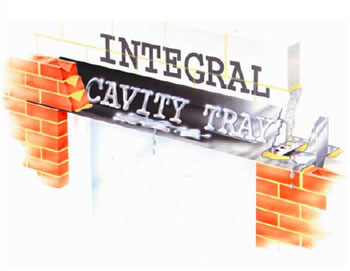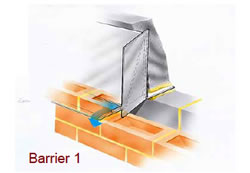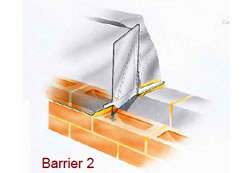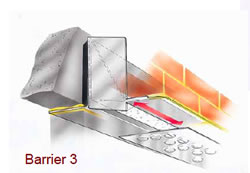About us I Stockists I Environment I Stainless Lintels
Call 01206 79 2001 for more information
Lintel Moisture Control
Moisture TransferThe control of moisture is most applicable to Lintels used in cavity situations, where the inner of the cavity wall should remain dry. All our cavity wall lintels with sloping webs slope down towards the outer, unlike some other manufacturers that either do not slope their lintels for the same application, or that slope both ways from the center of the cavity This means that in the event of a DPC failure above the lintel, any moisture will automatically be channelled away to the outer leaf of the wall.
|
Lintels and DPC requirementsFrom a corrosion perspective, all lintels except those made of stainless steel should be installed with a separate DPC above them to afford protection from moisture that would cause corrosion. Lintels manufactured from stainless steel may act as a DPC in their own The stop-ends may be proprietary adhered stop-ends as detailed on our Stainless steel lintels are generally chosen from our high strength
If you’re after Stainless Steel cavity lintels,
|
The ‘stop-end’ is positioned at least 100mm from the cavity closer, so any water that bypasses the first two barriers must track back this far before it can cross to the inner leaf. |
The ‘stop-end’ slopes downwards to the outer leaf at its base, so any moisture running down the outside of the plate tracks to the outer. |
The ‘stop-end’ is positioned at least 100mm from the cavity closer, so any water that bypasses the first two barriers must track back this far before it can cross to the inner leaf. |
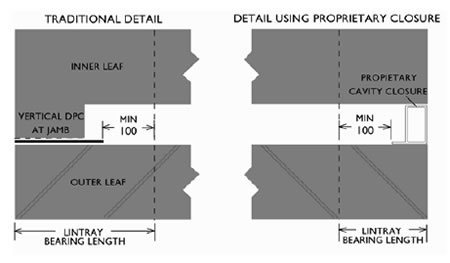 |
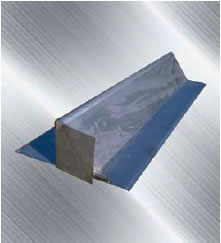 |
|
